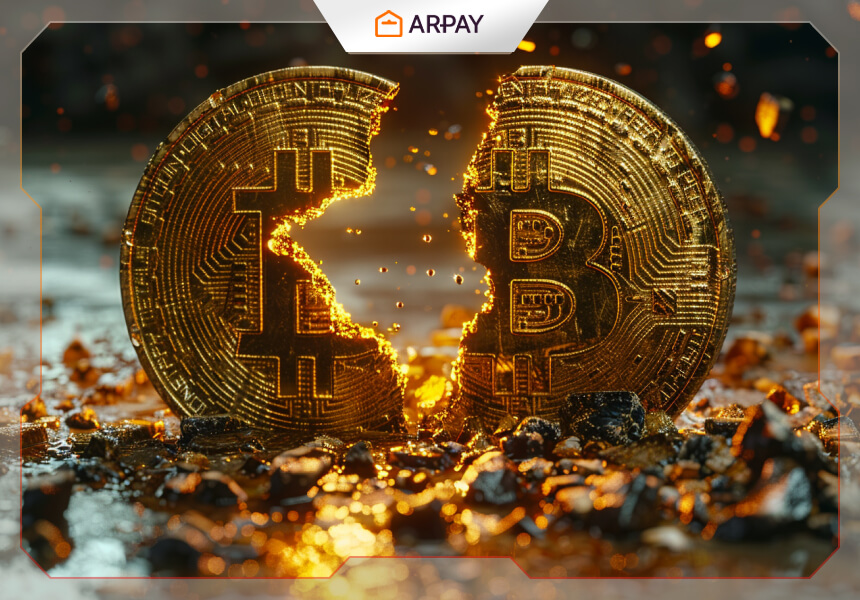Bitcoin is a digital currency that was introduced in 2009 by an unknown person or group using the pseudonym Satoshi Nakamoto.
It’s the first and most well-known cryptocurrency, which means it uses cryptography for security, making it difficult to counterfeit.
Bitcoin operates on a peer-to-peer, allowing users to transact directly without needing an intermediary like a bank.
These transactions are verified by network nodes and recorded on a public ledger known as the blockchain.
Bitcoin is unique because there are a finite number of them: only 21 million will ever exist.
This scarcity is similar to precious metals like gold, which is why Bitcoin is often referred to as ‘digital gold’.
The creation of Bitcoin through the process of mining provides a controlled way to introduce new bitcoins into the system, and it also incentivizes people to secure the network.
As a decentralized currency, Bitcoin has sparked a wave of innovation in finance and has paved the way for many other cryptocurrencies.
Take control of your financial future today—embrace the power of Bitcoin and join the revolution of decentralized currency!
What’s Meant By Bitcoin Halving?
Bitcoin halving is a significant event in the cryptocurrency world that occurs approximately every four years.
It refers to the reduction of the block reward given to Bitcoin miners by 50%.
This event is a part of the Bitcoin protocol, initially set by its creator, Satoshi Nakamoto, to control the supply of new bitcoins entering the market.
Here’s what happens during a Bitcoin halving:
Block Reward Reduction:
Before the halving, miners receive a certain number of bitcoins for each block they mine and add to the blockchain.
The halving cuts this reward in half, which decreases the rate at which new bitcoins are created.
Impact on Supply:
Halving reduces the new supply of bitcoins, making them more scarce. This scarcity can potentially increase the value of Bitcoin if demand remains steady or grows.
Inflation Control:
By decreasing the rate at which new bitcoins are generated, halving helps to control inflation within the Bitcoin ecosystem.
The most recent halving occurred on May 11, 2020, when the block reward was reduced from 12.5 to 6.25 bitcoins.
The next halving is expected to happen in April 2024, when the reward will drop to 3.125 bitcoins per block.
The process will continue until the maximum supply of 21 million bitcoins has been mined, which is estimated to occur around the year 2140.
What are The Factors that Must Consider After the 2024 Bitcoin Halving
After the 2024 Bitcoin halving, several factors will be important to consider as they could influence the cryptocurrency’s ecosystem and market dynamics:
- Increased Scarcity: The halving will reduce the rate at which new bitcoins are created, which could lead to increased scarcity and potentially impact the price.
- Renewable Energy and Operational Efficiency: The cost of mining will become a more critical factor. Miners may need to seek more energy-efficient methods and renewable energy sources to maintain profitability.
- Spot ETFs: The introduction of spot Exchange-Traded Funds (ETFs) for Bitcoin could change the landscape of investment and influence the price after the halving.
- Impact of Ordinals and BRC-20: The adoption and impact of new protocols and token standards like Ordinals and BRC-20 on the Bitcoin network could affect its price.
- Federal Reserve’s Benchmark Rates: The lack of clarity on the Federal Reserve’s benchmark interest rates could also play a role in Bitcoin’s price volatility post-halving.
These factors, along with the overall market sentiment and global economic conditions, will likely play a significant role in shaping the trajectory of Bitcoin’s value and adoption after the 2024 halving event.
Conclusion
Bitcoin Halving is a pivotal event that occurs approximately every four years, significantly impacting the cryptocurrency market.
It reduces the rate at which new bitcoins are created, thereby decreasing the supply and potentially increasing the scarcity of Bitcoin.
This scarcity, coupled with historical increases in demand post-halving, suggests a potential for upward price pressure.
However, it also presents challenges for miners, who see their rewards halved, possibly incentivizing greater efficiency and innovation in mining technology.
Ultimately, the halving underscores Bitcoin’s deflationary nature and its departure from traditional inflationary currencies, reinforcing its unique value proposition as a digital asset.
FAQS
Why does Bitcoin Halving happen?
The halving is programmed into Bitcoin’s code by its creator, Satoshi Nakamoto, to control inflation and limit the total supply of Bitcoin to 21 million.
How does Bitcoin Halving affect prices?
Historically, halving has led to an increase in Bitcoin prices due to the reduced supply and increased scarcity. However, the exact impact on prices can vary based on market conditions.
Can Bitcoin Halving affect the mining industry?
Yes, halving affects miners as it reduces their rewards for validating transactions. This can lead to increased mining efficiency and innovation in mining technology.
How many Bitcoin Halvings will there be?
There will be a total of 32 Bitcoin Halving events until all 21 million bitcoins are mined, which is expected to happen around the year 2140.
What happens after the last Bitcoin Halving in 2140?
After the last Bitcoin Halving, miners will no longer receive block rewards, and will instead be compensated with transaction fees for their role in processing transactions.





